In the lead up to the release of Marvel Studio’s Avengers: Infinity War, much was made over the fact that Josh Brolin’s Thanos was actually the film’s protagonist. According to screenwriters Markus and McFeely, amidst its undoubtedly comic-book-crossover-event-inspired fractured narrative of various teams of heroes scattered all across the universe, the core of the narrative was, in fact, Thanos’ story. And while the accuracy of this statement can and will be debated for years to come, Infinity War does, very much so, put Thanos on a very traditional, Joseph Campbell-ian hero’s journey.
His quest is to acquire all six infinity stones so that he can use them to wipe out half of all life in the universe, while the Avengers (read: our heroes) serve as the antagonists for all intents and purposes. They are the opposing force, the narrative drive attempting to prevent Thanos from completing his quest. Which, regardless of what other flaws the film may have, is an exceedingly bold creative choice. One of the most interesting ways that Markus, McFeely, and directors the Russo brothers chronicle this story is through the use of a single, very simple motif: sunlight.
Over the course of Avengers: Infinity War and Avengers: Endgame, the visual motif of sunlight is used to tell a story all its own, symbolizing the literal light at the end of the tunnel for our characters’ respective hero’s journeys.
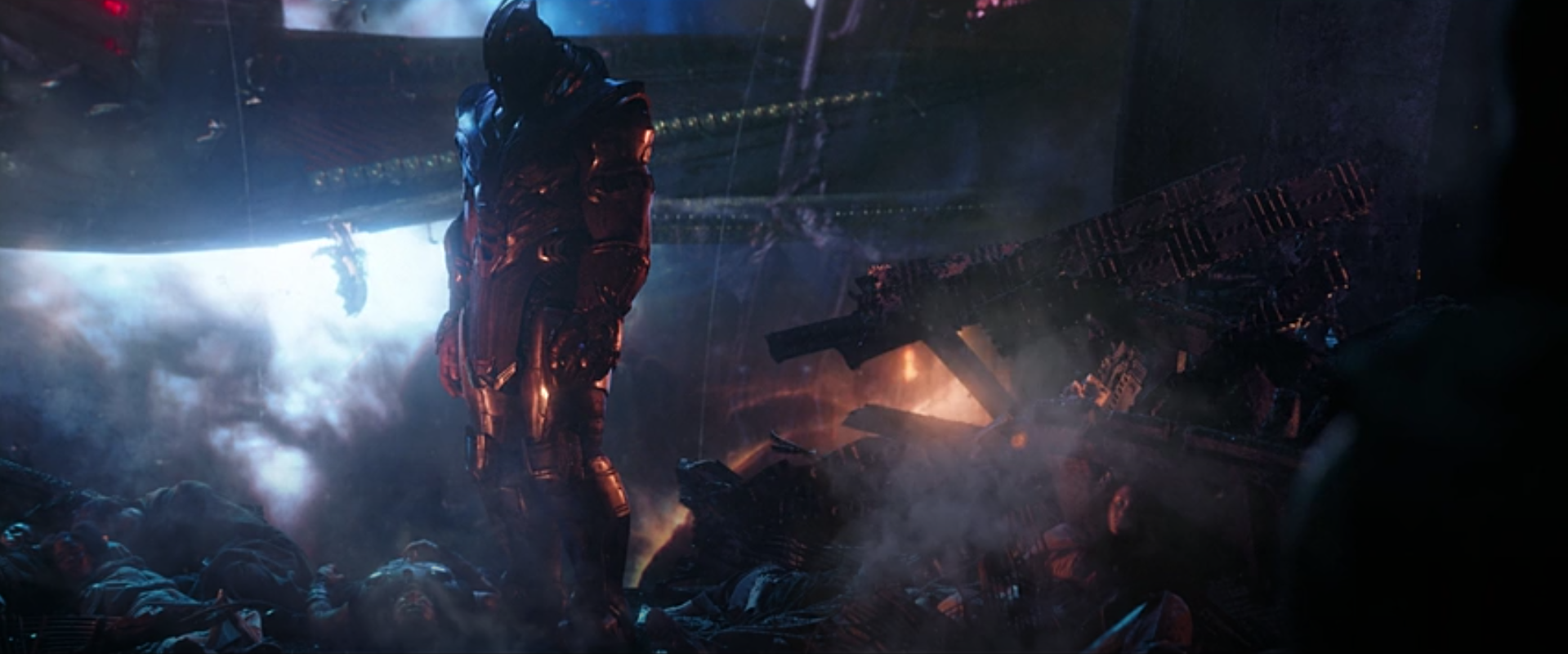
As mentioned, Infinity War is very much Thanos’ story. Thus, in that film, sunlight is used as Thanos’ motif, serving as a constant visual cue, showing how close he is to completing his quest. As the Mad Titan himself says, he longs to “rest and watch the sun rise on a grateful universe”. His introduction to the film comes mid-siege of the Asgardian refugee vessel, the Statesman, as he and his Black Order kill off half of the Asgardians left alive. Here, the camera pans around, reveling in the death and destruction Thanos hath wrought before revealing the character himself. Yet his back is to us, instead looking off into space at a blinding star in the distance; his sunlight. Although this scene sees him immersed in the vast darkness of space, just beginning his journey, his eyes are focused on the sunlight that awaits him. From the moment he is introduced to us, Thanos is exclusively focused on completing his quest.
This first scene also foregrounds the motif’s future relevance to the over-arching story of the two films as a whole, with Loki’s dialogue to Thor: “I assure you, brother. The sun will shine on us again”. But this isn’t their film, and it’s not yet their motif. As a result, Loki is mercilessly killed at the hands of Thanos.
The remainder of Infinity War sees Thanos quite literally journeying from the darkness of space to increasingly brighter environments. From space, he journeys to Vormir to acquire the Soul Stone. This planet’s primary light source is a constantly eclipsed sun. He grows closer to his sunlight but it does not yet shine upon him. It is no coincidence that the film presents Vormir as the biggest obstacle to Thanos as a character, emotionally. In order to attain the stone, he must sacrifice Gamora, an act which he himself later states “exacts a heavy toll”. Immediately following Gamora’s death, the sky of Vormir ignites with bright, blinding light; Thanos has gotten that much closer to his goal.
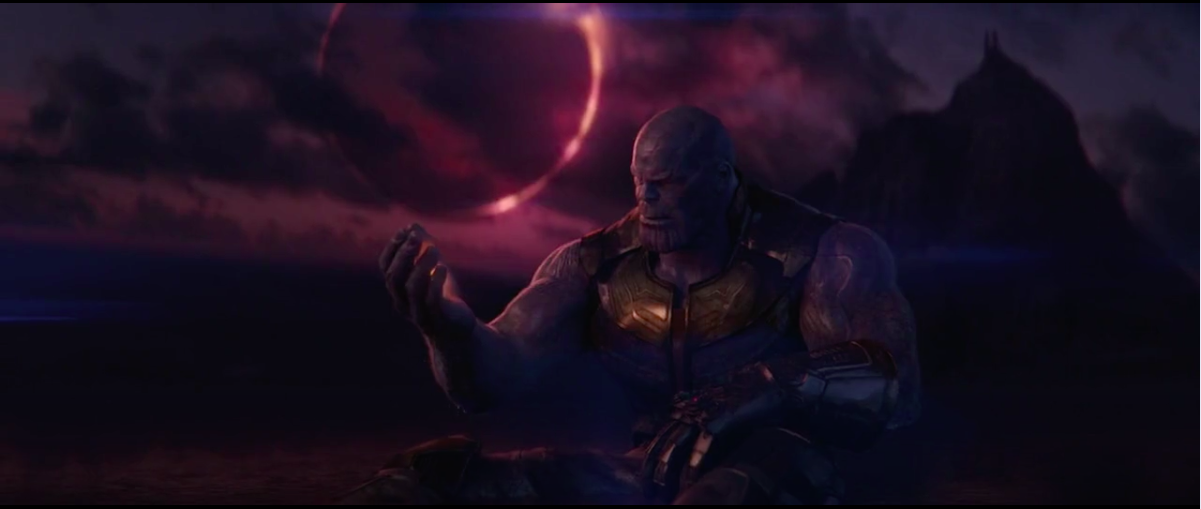
From here, he journeys to Titan, a planet which, from a lighting perspective, seems to be stuck in an unending magic hour. The entire planet is lit in the orange glow of encroaching or dissipating sunlight, moving Thanos one step closer to his goal. Again, here he attains another stone, this time the Time Stone from Doctor Strange, moving him one step closer to his quest. Which is what allows him to move to his next location; Earth. Or more specifically, Wakanda.
Here, Thanos is illuminated in full-blown, harsh sunlight for the first time in the entire film. He unquestionably bests the entirety of the remaining Avengers roster and proceeds to rip the Mind Stone from Vision’s head. With the entire Infinity Gauntlet fully assembled, it looks as though Thanos’ victory is imminent. But then, something unexpected happens. Thor attacks Thanos, with Thor being framed against the sunlight, eclipsing Thanos’ moment of victory. Every ounce of the form, from this framing, to the music, is telling the audience that this is the moment Thor saves the day and puts all of this to an end. For a brief moment, it looks as though Loki was right; the sun is shining on their family once more, as Thor takes Thanos’ sunlight for his own. But alas, the motif is still not yet theirs. Thor thinks he’s won, he thinks the sunlight is his own. But Thanos chides him, telling him “you should have gone for the head” and still uses the Gauntlet all the same. He obliterates half of the universe, leading to all of the Avengers hearing the thundering of storm clouds as they watch half of the universe turn to dust. Meanwhile, Thanos teleports himself to the Garden, where he is able to peacefully sit and watch the sunrise in the film’s final frames.
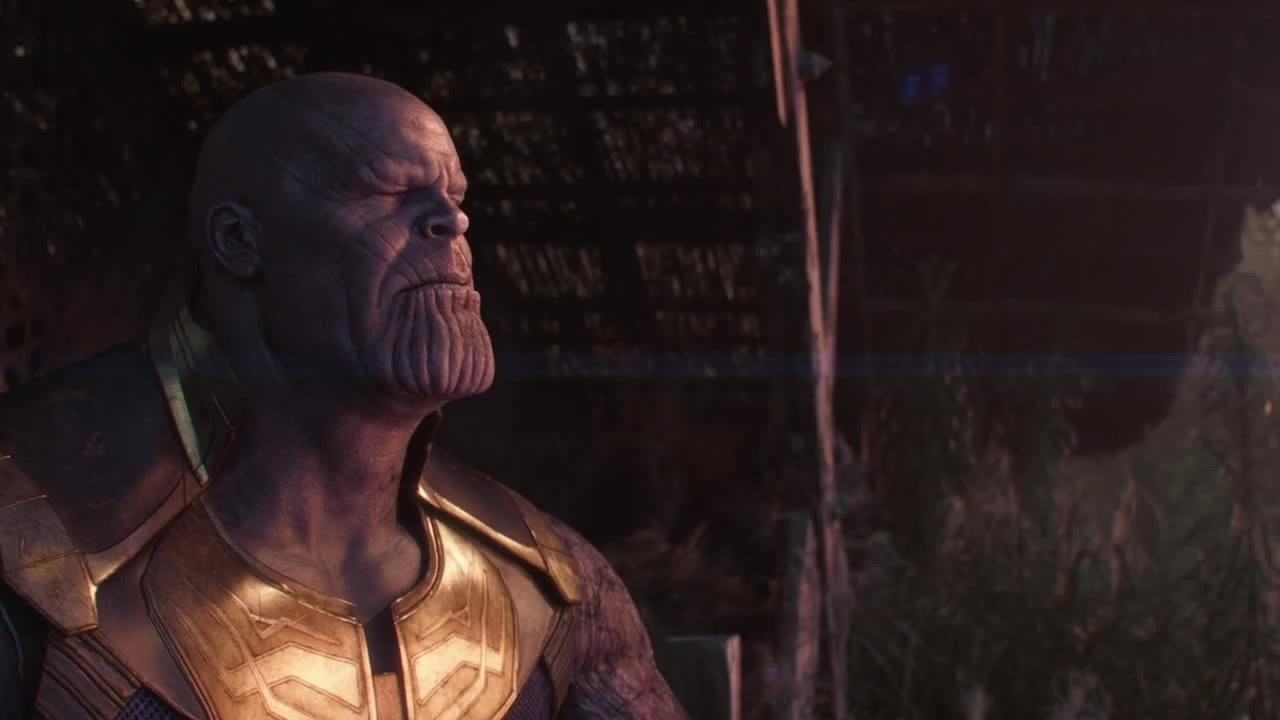
Infinity War is Thanos’ hero’s journey and he does successfully complete it. The Russos are so committed to this idea that they even have the guts to end the film on this victorious shot, with the form and motif quite literally spelling it out that Thanos has won and forcing the audience to marinate in that fact.
Which leads us to Endgame. Much like the two previous Avengers films, Joss Whedon’s The Avengers and Avengers: Age of Ultron, Infinity War and Endgame are each other’s mirror opposites. Whereas Whedon’s films told the converse stories of the assembly and subsequent disassembly of the original Avengers team, the Russos’ films tell the story of Thanos’ victorious journey in snapping the universe in half and the Avengers’ subsequent journey to undo that very act.
After a cold open featuring Hawkeye’s family all getting dusted by Thanos’ snap in an environment that is grey and devoid of sunlight, with the thundering storm clouds being heard once again, Endgame properly opens with Tony Stark and Nebula stranded in space. But unlike Thanos at the beginning of Infinity War, there is no sunlight for them to look to. The entire ship is illuminated in the cold green-blue lighting of the void; there is no victory in sight for them. Tony records what he thinks to be a final goodbye message to his beloved Pepper Potts and Nebula tucks him into his chair safely, practically preparing for their imminent death.
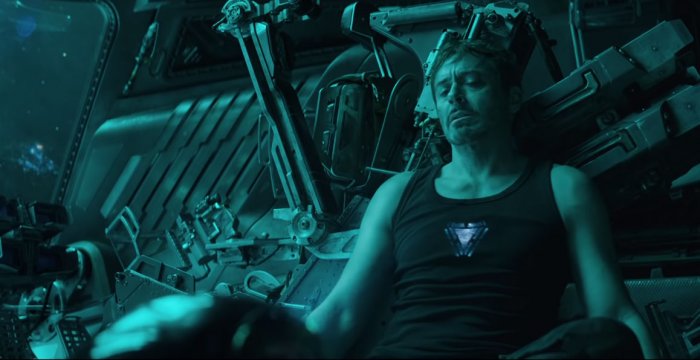
The camera holds on a close-up of Tony’s face for a period of time, illuminated sparsely in this blue-green lighting. Slowly, the light gets warmer and warmer, turning to orange. Tony opens his eyes to see Captain Marvel there to save them, creating her own sunlight. She is the sunlight for Tony in more ways than one. Not only does she provide literal salvation, taking them back to Earth and saving their lives, but she also provides hope. As he later tells her back at Avengers HQ, “you’re great, you’re what we need, fresh blood”. She is a hope for the future, a future that doesn’t need Tony Stark anymore, a future that is safe without him.
After returning to Earth, the rest of the remaining Avengers board the Benatar and fly off to Thanos’ Garden, in the hopes of getting the Gauntlet and using it to bring everybody back. Here, as they reach the jump point which sends them careening through space at light speed, the motif is introduced specifically to Steve Rogers. There is a blinding light in the middle of the tunnel of lights as they make the jump, a literal light at the end of the tunnel, if you will. The film cuts to a close-up of Steve’s eye, the light reflected in his iris. They are chasing his sunlight, this blinding fever dream that they have to beat Thanos at all costs. Much like Thanos, this goal is the only thing on Steve’s, motivating his every choice. When Natasha later attempts to comfort him once they arrive at the Garden, telling him that their plan is going to work, his response is extremely telling: “I know it is. Because I don’t know what I’m going to do if it doesn’t.”
They all journey down to the Garden, entrap Thanos immediately, finding him weakened and having already destroyed the stones. And it’s here that the motif is introduced specifically to Thor. In his rage, Thor chops off Thanos’ head, even repeating the same rhetoric Thanos said to him at the end of Infinity War, “I went for the head”. We watch Thor leave, walking out into the sunlight. But the focus fades, the image going blurry. This is not the sunlight Thor seeks, it is not a victory. It is a false win, one dictated by the flaws of his past. As we later see, this choice takes Thor down a path that leads to depression and isolation.
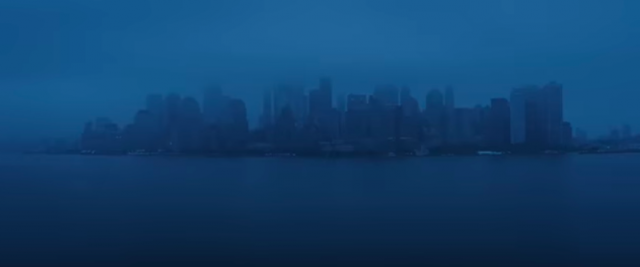
Immediately following this, the film cuts to five years later. Every establishing shot of New York from 2023 is clouded in fog and blue lighting. It is a world literally devoid of sunlight; there is no hope for our heroes, no victory in sight. Until Scott Lang shows up, that is. Scott’s re-emergence from the Quantum Tunnel marks the first time since the time jump that there is even a glimpse of anything resembling sunlight. He brings with him hope; the idea that perhaps the Quantum Realm could be utilized to time travel.
While this spark of light makes a big impact on Steve and Natasha, others aren’t as impressed. It’s here that we see Tony again for the first time since the time-jump, living in a gorgeous house by a lake, their entire estate awash in sunlight. Tony has completed his quest, in living a family man’s life with Pepper and their daughter Morgan. He has found his own peace, illuminating him in sunlight. As a result, he isn’t as quick to accept Scott’s proposed plan as the others. Tellingly, it isn’t until the middle of the night, engulfed in darkness and his own thoughts of remorse and regret at seeing images of he and Peter Parker, that he begins to actually indulge the idea.
From here, the entire team steadily begins working together towards accomplishing their self-proclaimed “time heist” and all of them get varying degrees of sunlight. Their environments are more well-lit as they begin to realize that their goal may actually be achievable. Notably, the actual Quantum Tunnel they build to time travel with uses reflective glass panels above it, resulting in directly refracted sunlight. This is used exceedingly well when Clint Barton does the test run, journeying back to his family’s home before their death. When he returns, the panels move above, him as waves of sunlight literally wash over him only to be pulled away just as he remembers the pain of his family being truly gone.
As they prepare to embark upon the time heist, sunlight floods through the windows of the facility in a way we haven’t at all seen up to this point. They are closer than ever before to fulfilling their quest.
The actual time heist itself also features some brilliant uses of the motif, as it follows Infinity War’s progression in reverse order. The first destination visited is 2012 New York, which is in broad daylight. The second is 2013 Asgard, which is an interior with sunlight coming only through various windows. The third is 2014 Morag, which has an intimate magic hour lighting and the last is Vormir, the setting of the eternally eclipsed sun. It is no coincidence that this literal journey into darkness happens parallel to the film reintroducing Thanos to the narrative.
His ship, Sanctuary II is constantly framed against the backlighting of bright sunlight, with the ship literally eclipsing the light. The sunlight may be our heroes’ motif now, but Thanos continues to do everything he can to literally stand in the way of it.
This all comes to head after the team returns to the present, with all of the Stones in-tow. They use them to snap everybody back to life, unaware that Thanos has followed them back to this time period as well. Immediately following the snap, Scott walks over to a nearby window and sees genuine sunlight shining down on them. It is beautiful, until it is literally eclipsed by Thanos’ ship.
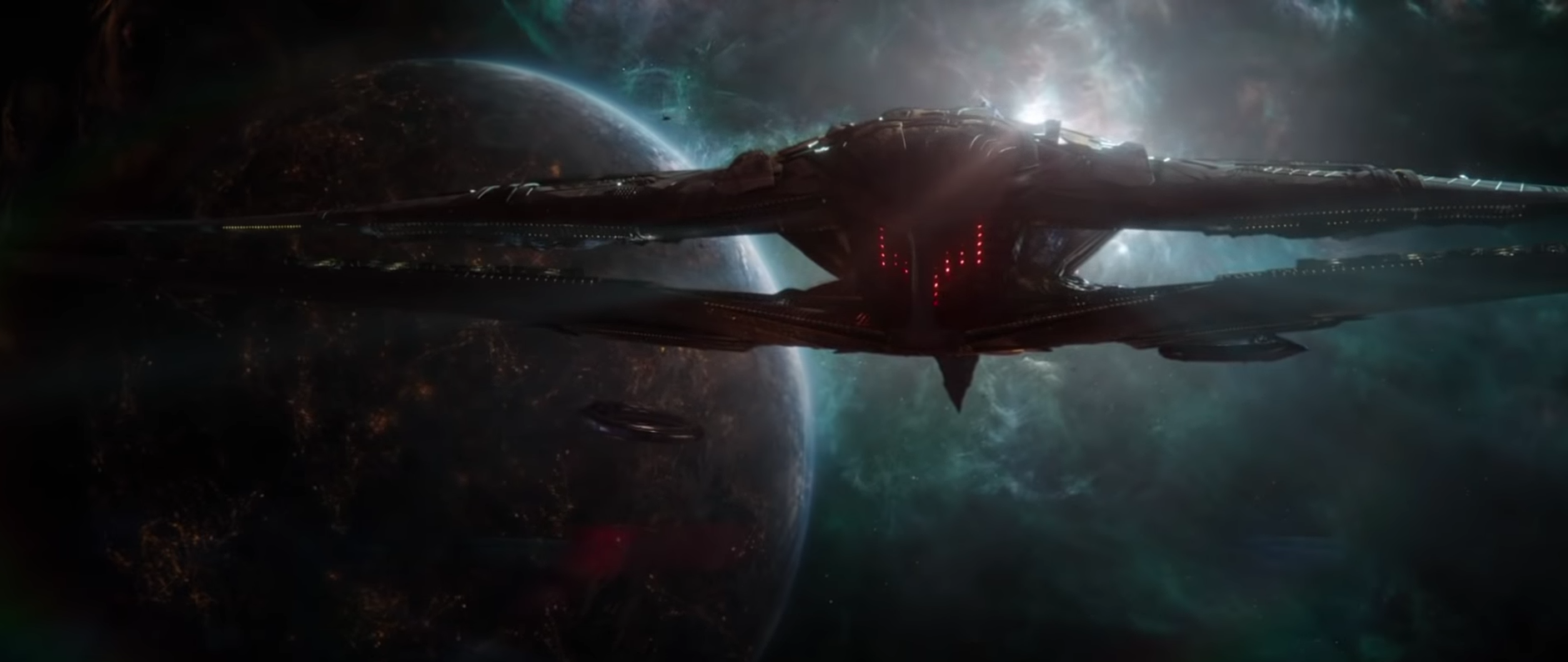
The ship fires on the Avengers Compound, reducing it to rubble. The once clear sky is clouded with dirt, ash, and rubble residue. Here, Thanos quite literally darkens the sky, obscuring their sunlight. And yet, the Avengers do not give up hope. As Steve, Tony, and Thor all emerge from the rubble to face Thanos, their sunlight shines through the darkness, specifically spotlighting them.
The three of them take Thanos on and are ultimately bested. Tony and Thor are left incapacitated as Thanos unleashes the hordes of his armies upon the Earth. Steve is the only one left to stand against them and in what is arguably the MCU’s best moment of cinematography ever, there is a gorgeous canvas shot of Captain America staring down the armies of evil, darkness encroaching all-around, with a sliver of sunlight still illuminating him. Even in the face of certain defeat, Steve refuses to lose hope, to lose sight of why they’re still here, still fighting.
And it’s then that a familiar voice crackles over the speaker, saying, “On your left”. Dozens of sling ring portals open behind Steve, each one of them bringing light. As the various heroes of the MCU come to Steve’s aid, they literally introduce dozens of new sunlight sources into the frame along with them. Much like Captain Marvel at the start of the film, they are the sunlight. Which is why the resulting “Avengers, assemble” and battle feel so earned and so emotionally-charged; it is the climactic moment of a two-film-long motif that pays off in one of the grandest ways imaginable.
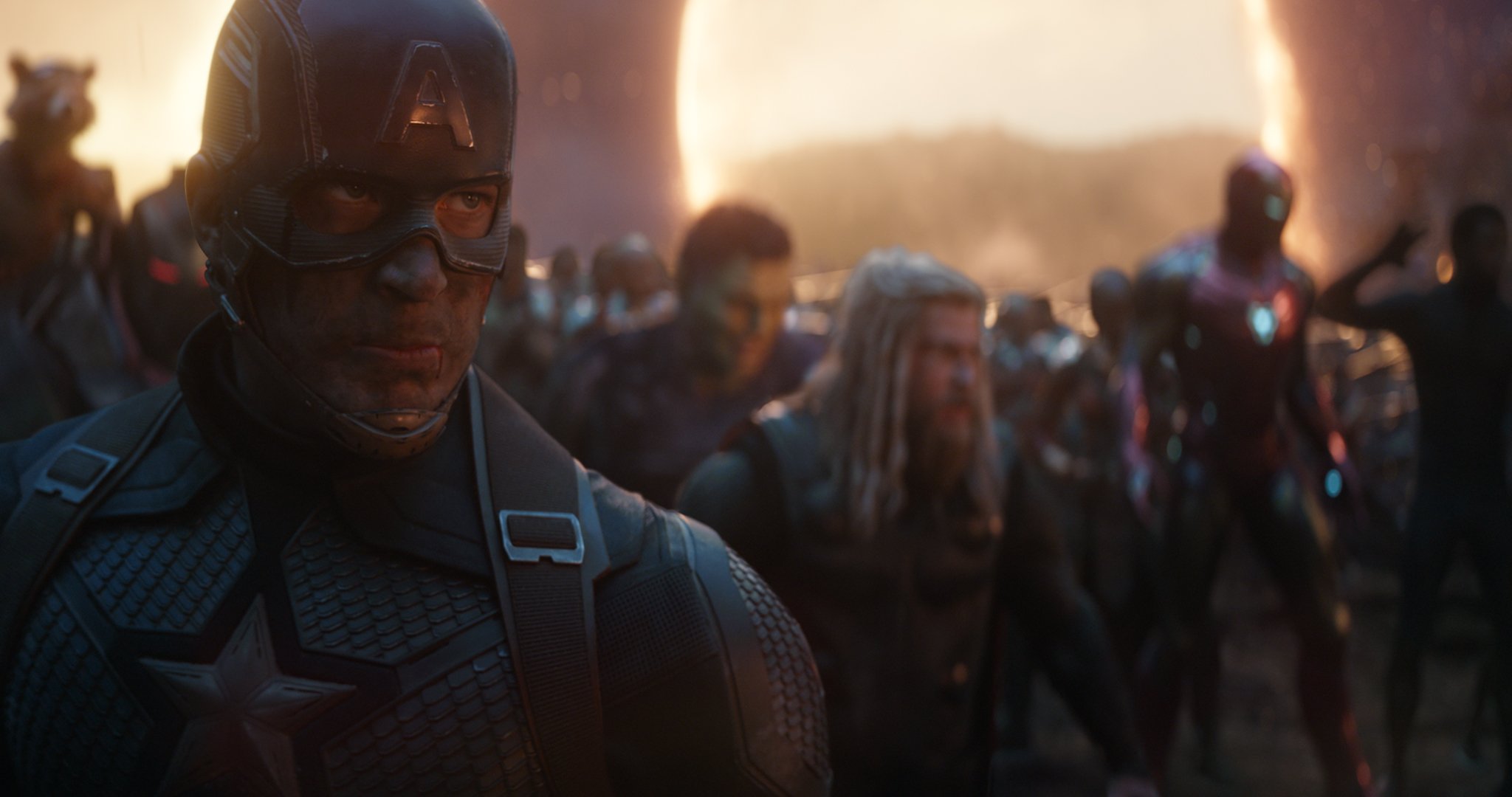
At the end of the battle, after Tony snaps all of Thanos’ armies out of existence, Thanos is left to sit amidst the rubble. As his armies and ships evaporate, sunlight comes flooding back into the setting, only this time Thanos has his back to the sun. The sun is no longer rising for Thanos, it is setting. And with this knowledge, he too disappears.
In the film’s final moments, all of our characters find their own sunlight. Tony’s funeral is awash with it as all of his friends and family gather to mourn him, proving that the world will be alright without him and that he has truly earned his rest. Thor takes the words of his mother to heart, leaving New Asgard to Valkyrie and embarking on a journey with the Guardians of the Galaxy.
And Steve gets the most poetic moment of all. After time traveling back into the past one last time, the film closes on an intimate shot of Steve and his long-lost love, Peggy Carter. They are reunited, dancing, in love, and positively aglow in the sunlight pouring in through their window.